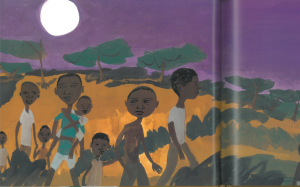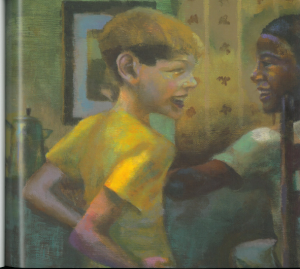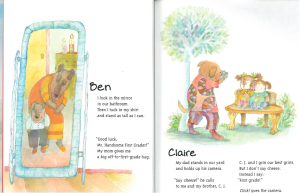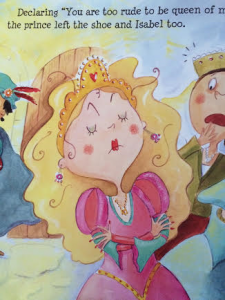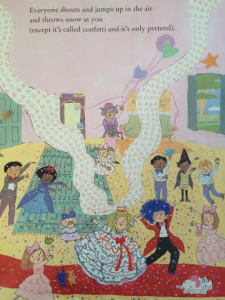
Author/ Illustrator: Tomi Ungerer
Publishing Information: Phaidon Press Limited, 2010
Number of Pages: 29
Genre: Biography, Historical Fiction, Picture book


Analysis:
Otto is a teddy bear. He, David and Oskar are best friends. The war keeps them separated but they never forget each other. The war ends and the three friends finally get their reunion when they are very old.
The story is based on historical facts. During World War II, people lived in danger all the time and often got separated from their families. Jews were treated unfairly and got expelled. It is a first-person narrative from a teddy bear’s perspective. The book functions as both a window and a mirror to show children what really happened on another land decades ago and what war would bring to us.
I found one of the plots in the book problematic. When Oskar’s mother explained to him “what is a Jew” (P. 7), her words sound extremely insensitive. According to the text, she said, “Jews are different to us, they have another religion. The government is against them and makes life very difficult for them. It is unfair and very sad, but they must now wear this yellow star to be singled out” (P. 7). Although she said “it is unfair and sad” (P. 7), she did not want to do anything to fight against the unfairness. Such indifference reminds me the provocative poem written by Pastor Martin Niemöller. “First they came for the Socialists, and I did not speak out — Because I was not a Socialist. Then they came for the Trade Unionists, and I did not speak out — Because I was not a Trade Unionist. Then they came for the Jews, and I did not speak out — Because I was not Jew. Then they came for me — and there was no one left to speak for me.” Children should learn to stand for what is right and what is wrong. It is important for them to learn social justice from the story. The other thing I notice is that one of the illustration in the book seems a little bit strange. When Jasmin, the soldier Charlie’s daughter, plays with the teddy bear, three boys hit the bear with baseball bat. In the image, there are two adults sitting in the back sneering. It might give children the wrong impression that it is okay, even amusing, to bully. Besides, one of the boy’s shirt said “NYU”, which stands for New York University. It is not fair to put the school name on a negative character.
Perceptually, the illustrator uses various colors to illustrate the story. He uses brighter colors to depict happy moments and darker colors to depict the war. Structurally, text and images do not overlap. Ideologically, this book introduces religious diversity to children and shows them people with different religions can be best friends. Also, the book conveys that friendship can last forever. Finally, the story tells children that wars can hurt people we love. We should cherish the peace and freedom we have today.


